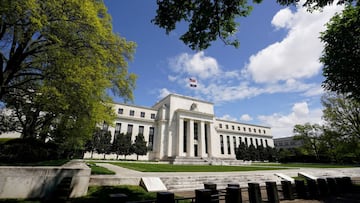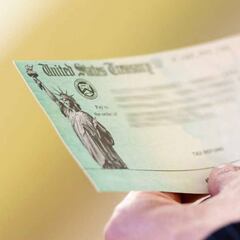Why is the US Federal Reserve ending covid-19 stimulus checks?
The central bank announced the slow ending of support for businesses, but the long-anticipated interest rate hike is yet to be announced.


In an announcement that has been expected for months, the Federal Reserve has finally said that the winging down of covid-19 stimulus will begin. They announced on Wednesday that they would begin cutting that stimulus by $15bn a month but left interest rates unchanged.
Federal Reserve Chairman Jerome Powell announced the Fed would ease up on some of the massive help it’s been providing to the economy, amid concerns about rising inflation, but fell short of predicting a coming rate hike https://t.co/PLuqcHJUwn pic.twitter.com/6sdID8OqXK
— Reuters (@Reuters) November 4, 2021
Back at the start of the pandemic, the Fed cut interest rates to near zero while also buying Treasury- and mortgage-backed securities for $120 billion to prevent their collapse.
Why is the Federal Reserve ending covid-19 stimulus?
While the spending support was deemed necessary at the start of the pandemic, the relative recovery of the US economy means the Fed no longer feels it is necessary to keep pumping money into the economy. One result of this, which has been keenly felt by the population over the summer, is inflation.
The US is experiencing some of its highest inflation for years, at 5.4 percent. This is squeezing the public pocket as the price of goods, spurred forwards by sky-high gas costs, is increasing at pace. Cutting the amount of money dumped into the economy is one way to lower this, as well as an increase in interest rates. Higher interest rates mean people are more likely to save, meaning the economy slows.
This means a rise in interest rates, right?
Yes, but not straight away. While the bank has admitted inflation is "uncomfortably high", it blames chaos in global supply chains, something an increase in interest rates would not solve. It anticipates this problem will persist until the second half of 2022.
"We don't think it is time yet to raise interest rates. There is still ground to cover to reach maximum employment," Fed chief Powell said, adding that he thought that goal could perhaps be met late next year. In the meantime, expect high prices on goods.
BREAKING: The Federal Reserve will begin trimming its monthly bond purchases in November with plans to end them in 2022, but held to its belief that high inflation would prove 'transitory' and likely not require a fast rise in interest rates https://t.co/RU8ovbOcPv pic.twitter.com/0SArezelpm
— Reuters (@Reuters) November 3, 2021
The Fed also counters that an increase in interests rates now would prevent people rejoining the US workforce, which is seeing higher than normal unemployment at the same time as a record number of job vacancies. Unemployment stands at 4.8 percent while there are more than 10 million vacant jobs.
Related stories

Fourth Stimulus Check Update: what's the situation in every state?
"Ideally, we would see further development of the labor market in a context where there isn't another covid spike. And then we would be able to see a lot. To see how does (labor) participation react in the post-covid world," Powell told reporters.
"We are going to have to see some time post-covid, or post-Delta anyway, to see what is possible," he continued, in reference to the coronavirus variant that was largely responsible for a covid-19 surge and economic slowdown over the last three months.
